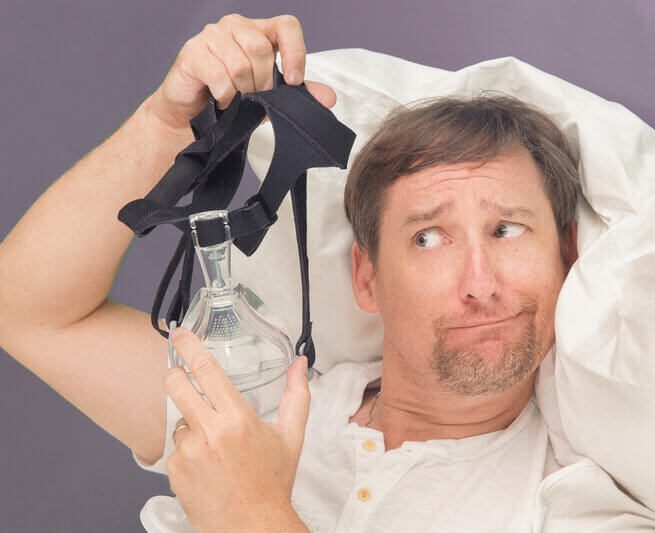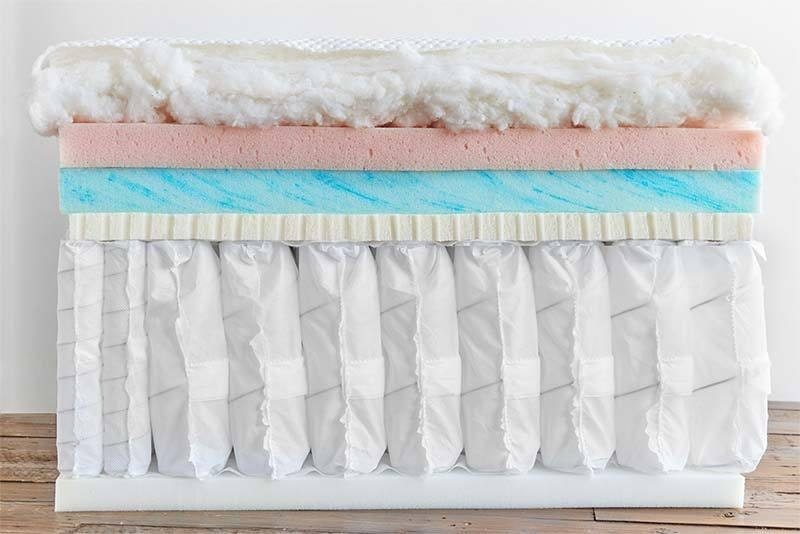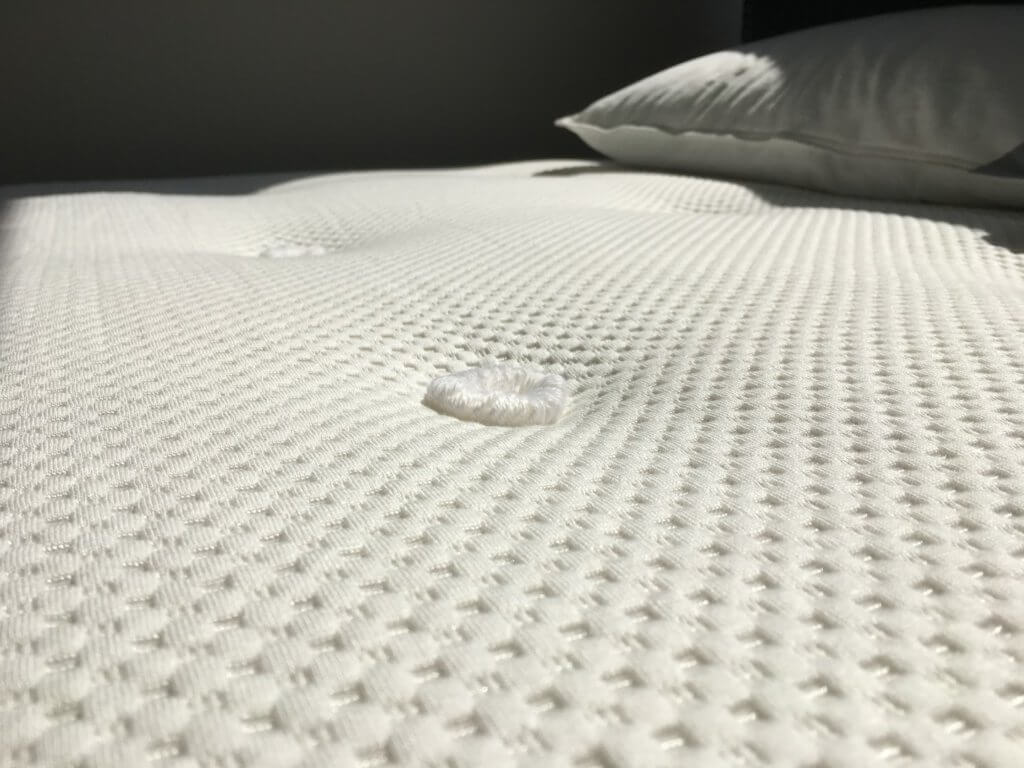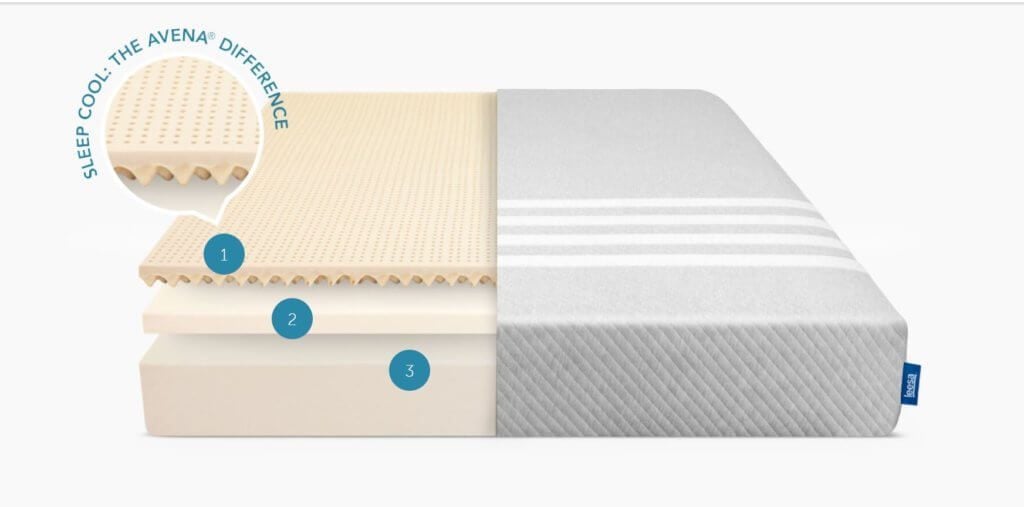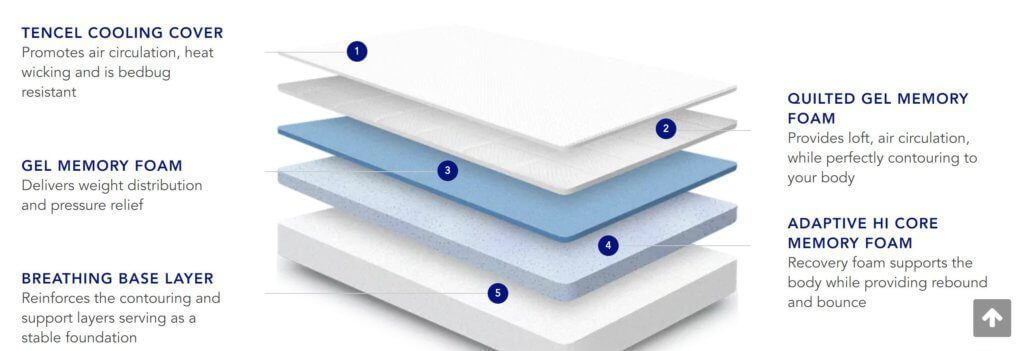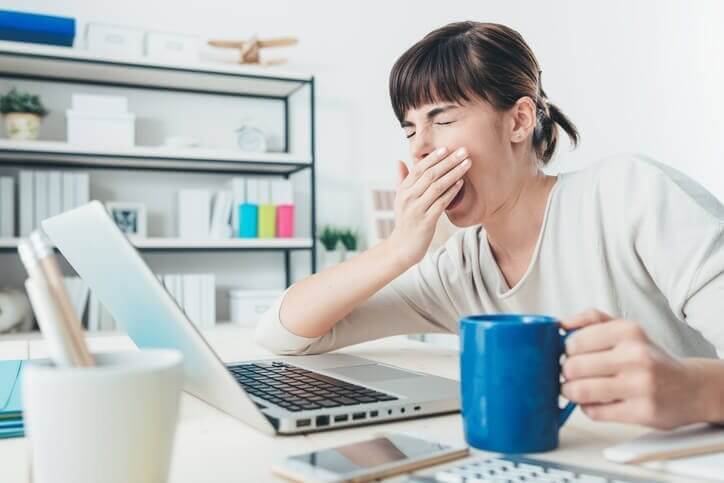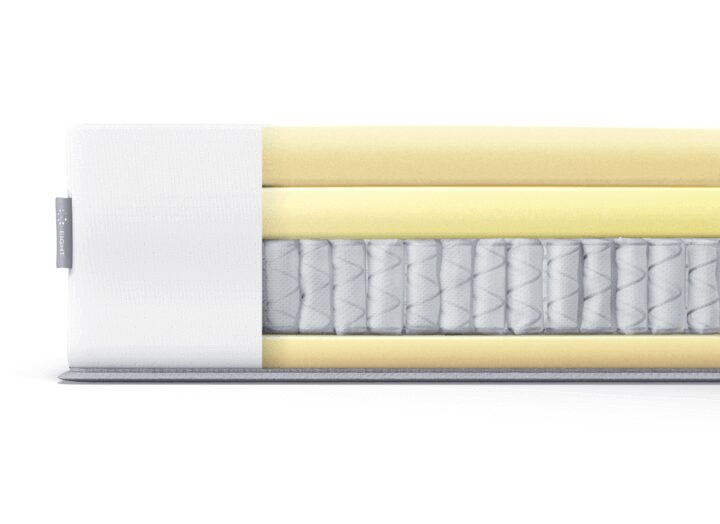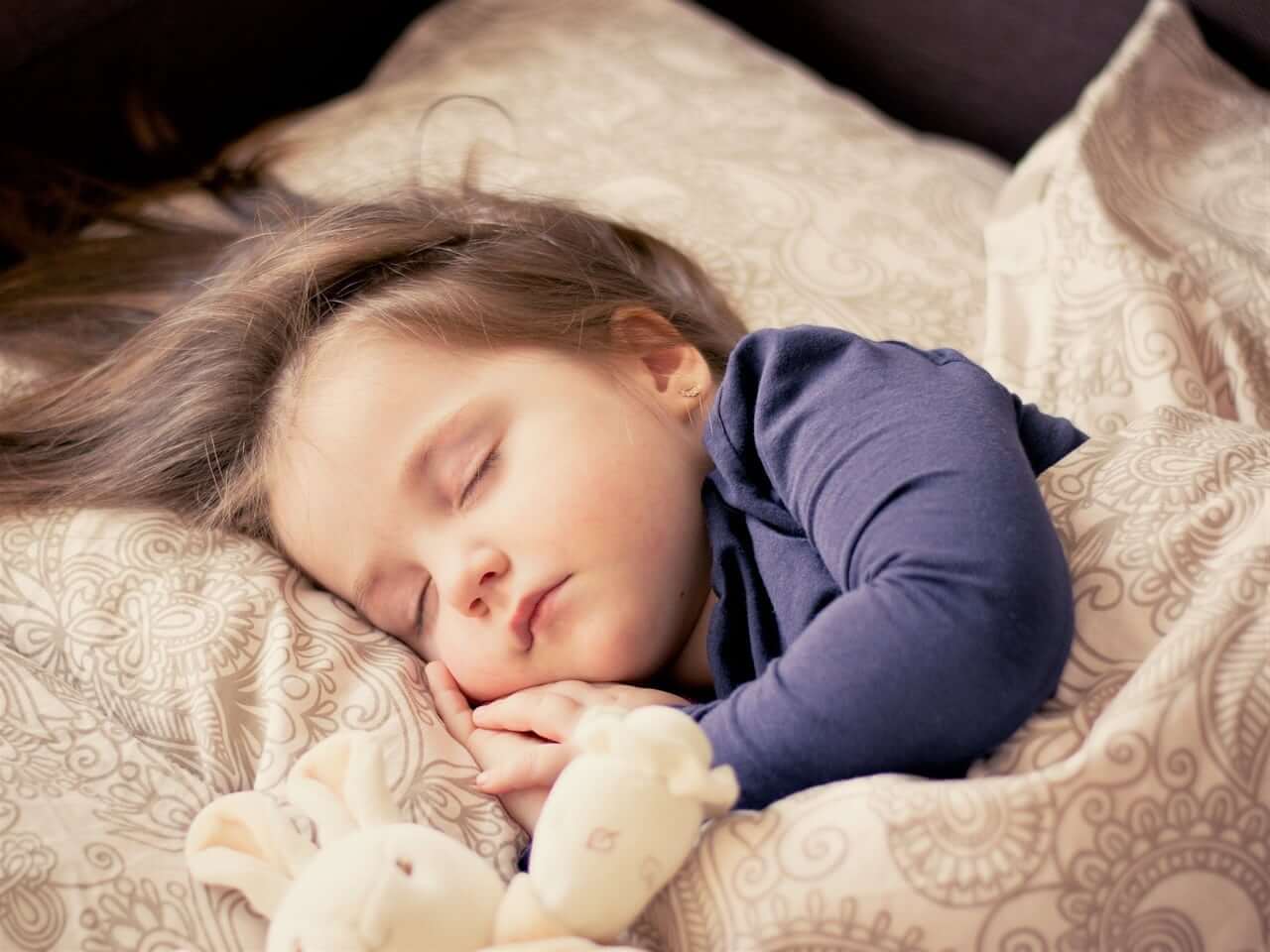What are the CPAP Alternatives for Sleep Apnea?
Sleep apnea is a common problem that affects over 18 million people around the world. More often than not, sleep apnea isn’t recognized, diagnosed, or properly treated. But when sleep apnea is detected, the go-to treatment is often the use of Continuous Positive Airway Pressure (CPAP). This involves wearing a mask while you sleep, which supplies air continuously to keep the air passage unblocked and facilitate normal breathing. If you, or someone you know, suffer from sleep apnea, you must have used or have been recommended to try CPAP.
Although a very effective treatment in dealing with sleep apnea, it often takes a lot of effort to get used to the mask. It causes claustrophobia, nightmares, dry and irritated throat, and nasal problems. Many people never get used to it, and several studies have found that more than 86 percent of sleep apnea sufferers never get comfortable with CPAP machines.
While a good solution for sleep apnea, CPAP is definitely not the only treatment for the condition. With technological advances, several alternatives to CPAP have been invented. They are often minimally invasive and provide long term treatment for sleep apnea.
Here are six alternative options for CPAP non-compliant people:
Oral Appliances
Also called Oral Appliance Therapy, dental appliances form the safest and simplest alternative to CPAP. This appliance is customized to fit the mouth of the patient and is worn only during sleep. Dental mouthpieces work like orthodontics that keep the jaw in position and enable proper breathing. This appliance is made and fitted by a dentist, so the patient, the doctor, and the dentist should work in close consultation about the device.
Oral devices are portable, comfortable, and don’t have the side effects of a CPAP. They are also often cheaper than CPAP, and more convenient when traveling.
Laser Surgery
The piece of tissue hanging down the back of your throat is called the uvula, and most often, this tiny projection is the cause of obstructive sleep apnea. The condition can be treated by minimizing an enlarged or extended uvula with the help of laser surgery. While traditional removal of the uvula is complicated and results in a number of side effects, laser surgery takes less than 30 minutes and is generally less complicated. With the removal or minimizing of the uvula, symptoms of sleep apnea are controlled, and proper sleep is restored.
Laser Tonsil Ablation
When tonsils are the ones blocking the airway, reducing their size can often provide relief from sleep apnea and snoring. This is a minimally invasive procedure that uses a laser to reduce the size of the tonsils and unblock the airway. The process takes around thirty minutes and is generally performed under local anesthesia. Compared to other forms of surgical procedures to cure sleep apnea and related symptoms, laser tonsil ablation has little to no discomfort, requires no hospital stay, and does not need the tonsil to be removed. Laser tonsil ablation is a common alternative to CPAP to treat sleep apnea as well as other tonsil disorders.
Positional Therapy
If a patient suffers from positional sleep apnea, then positional therapy is an effective solution. People sleeping on their backs, also called the supine position, often suffer from sleep disorders because of the obstruction of the airway. Positional therapy involves wearing a device that keeps a person on their side while they are asleep. This solution works only for those who suffer from mild sleep apnea that is corrected when they sleep on their side. For more severe cases, this therapy may not be effective.
Acupuncture or Acupressure
In a recent study, acupuncture and acupressure were found to be more effective than CPAP. They provide relief by stimulating the muscles of the upper air passage. This is a holistic method that aims to relieve sleep apnea sufferers without medications, devices, or surgery. However, this is again a procedure that works best for mild sleep apnea. For more complex problems, a more potent treatment needs to be followed.
Radiofrequency Tongue Ablation
If sleep apnea and snoring are being caused by an abnormal positioning of the tongue, then radiofrequency tongue ablation is a procedure that could provide relief. This procedure often proves helpful for those with an enlarged tongue that gets in the way of airflow. This minimally invasive procedure involves shrinking and tightening the base of the tongue with the help of radiofrequency technology, and usually takes less than thirty minutes.
Sleep apnea, if left untreated, can lead to severe health problems, including cardiac issues and hypertension. While CPAP is still the most widely used treatment for sleep apnea, there are alternatives that are designed for people uncomfortable with the CPAP device. Even if CPAP isn’t for you, there are other options that can provide long-term relief from the problem.
 Ben Trapskin
Ben Trapskin
Purple vs Nectar Mattress Two Totally Different Feels. See Why!
The Purple and
Let’s start with the purchase process. Both can be bought direct online via their respective sites. Both should arrive about a week after purchase however because these mattresses are in such high demand, they may arrive a bit later than a week.
Each have a generous trial period although Nectar has a 365 day trial period while Purple has a 100 night trial.
Each also has a good warranty period. Purple has a 10 year warranty while
Construction of the
The

Compare that with the specs of the Purple mattress
- The top layers is a 2′ hyper elastic ploymer also know as the “smart grid”.
- The midle layer is 3.5 inches of polyurethane foam.
- The base layer is made of 4 inches of a polyurethane foam which is a standard foam mattress base.
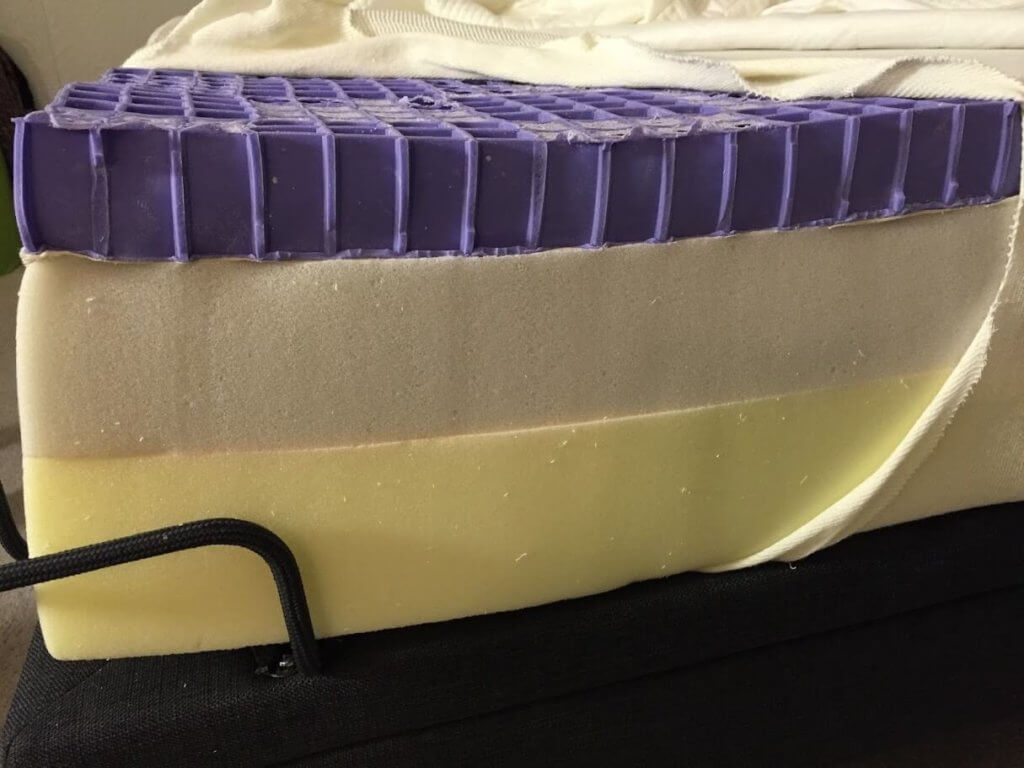
In terms of motion transfer the
First the
And now the Purple Mattress
Which sleeps cooler, Nectar or Purple?
Although the
In terms of cost, a queen size
Who should buy a Nectar Bed?
I recommend the
People that are looking for a good deal will be hard pressed to do better than the
Finally, if your partner tends to wake you up at night from their tossing and turning, the Nectar will put a stop to that. You won’t feel a thing due to the high density foams used in the
Who Should buy a Purple Mattress?
Again, hot sleepers will find immediate relief with the Purple mattress. It is basically temperature neutral in that it really doesn’t trap heat. The top layer grid allows air to freely pass through.
I also tend to recommend the Purple mattress to heavier sleepers. We find at the Yawnder store in Minneapolis that heavier people respond well to the Purple and it gives them the right amount of support.
Finally, people that have tried tradtional foam and coil mattresses but are still unsatisfied owe it to themselves to give the Purple a try. It’s something you really need to lie on to understand how it works and for many, it’s the mattress they have been seeking.
Want to know more about these two great mattresses?
Get the full Nectar Mattress Review
Get the full Purple Mattress Review
Labor Day Mattress Deals: Stunning Discounts Await You!
Labor Day Mattress Sales 2017: Unbeatable Deals Await
As Labor Day 2017 approaches, mattress sales are heating up, offering shoppers an excellent opportunity to upgrade their sleep experience. This year’s Labor Day mattress sales have expanded beyond traditional brick-and-mortar retailers, with online brands jumping in to provide significant discounts. With summer winding down and kids heading back to school, now is the perfect time to invest in your comfort. Below, you’ll find an updated list of incredible Labor Day mattress and bedding sales online—ideal for revamping your sleep sanctuary. Be sure to check back regularly as more fantastic offers come to light!
Why Labor Day is the Perfect Time for Mattress Sales
Labor Day has become synonymous with major sales, especially for mattresses and bedding. As we transition from summer to fall, it’s the ideal time to refresh your home and bedding. A new mattress not only enhances your sleep quality but also rejuvenates your overall well-being. Whether you’re settling into a new routine or preparing for a cozy winter, these Labor Day mattress sales are designed to cater to a variety of needs and preferences.
Exciting Labor Day Mattress Sales to Explore
Aviya
Take advantage of Aviya’s incredible deal: $100 off any size mattress with code USA100, plus enjoy $199 foundations at a reduced price of $50 off. This is an excellent opportunity to invest in quality sleep. Shop Aviya!
Bear Mattress
Stand out with Bear Mattress, which incorporates Celliant fiber—a material recently recognized by the FDA as a medical device that promotes recovery and enhances blood circulation. This Labor Day, receive $100 off on any size Bear Mattress or Bear Bundle by using the code LD100. Shop Bear Mattress!
Brentwood Home
Brentwood Home is making it easier to update your sleep experience with 15% off site-wide by using the coupon code LABOR15. This includes not just mattresses, but also luxurious pillows and blankets. Their Oceano mattresses come highly recommended for their comfort. Shop Brentwood Home!
Cocoon
For those in need of versatile options, Cocoon offers $100 off any mattress or $150 off any mattress and foundation set—perfect for creating your ideal sleep environment. Shop Cocoon!
Eight Sleep
Eight Sleep takes innovation to the next level with three unique mattress models: Saturd, Jupiter, and Mars. Their smart sleep tracking system revolutionizes how you monitor your rest. For Labor Day, enjoy $100 off mattresses, two free pillows, and a generous 100-day free trial, alongside free shipping and returns. Get started for as low as $24 per month with 0% APR for 18 months. Offer ends on 9/4/17. Shop Eight Sleep!
Essentia
Don’t miss your chance to save up to 25% off during Essentia’s biggest sale of the year. This is a golden opportunity for those looking to invest in premium sleep quality. Shop Essentia!
Layla
Get $100 off a Layla mattress using coupon code LABORDAY100. With its unique flippable design, this mattress is a favorite for those seeking adaptability. Shop Layla!
Luft
Enjoy 25% off on queen and king sizes with the promo code LABORDAY. A great chance to find the right fit for your bedroom. Shop Luft!
Nectar
With
Nest Bedding
Nest Bedding is offering $200 off the Alexander Signature Hybrid and Alexander Signature Series with code OMG200. Experience these luxurious mattresses firsthand. Shop Nest Bedding!
Nolah Mattress
Take $100 off any mattress with the coupon code LABOR. Nolah mattresses are noted for their ergonomic support and cooling technology. Shop Nolah!
Purple
The Purple Labor Day sale includes a complimentary Purple seat cushion when purchasing a Purple mattress. An added benefit for those looking to enhance their seating and sleeping experience. Shop Purple!
Tempur-Pedic
With Tempur-Pedic, enjoy 0% APR financing for 48 months on purchases over $750. Take advantage of $300 in accessories or off Ergo adjustable bases with your mattress purchase, plus a $300 gift card with select mattress sets. Shop Tempur-Pedic!
Wright
The Wright mattress stands out for its superior memory foam technology. Enjoy 20% off site-wide between August 30 – September 4th. An excellent choice for anyone seeking an engineered sleep solution. Shop Wright!
Zinus
Zinus is running a back-to-school sale with an attractive 30% off select items, including mattress toppers and beds, perfect for freshening up your space. Shop Zinus!
Bedding Sales Worth Mentioning
Alongside mattress deals, Bedding sales during Labor Day provide opportunities to acquire cozy essentials.
– SOL Organics is offering $30 off and free shipping on sustainable bedding options. Shop SOL Organics!
– Slumbercloud has free shipping on all orders, complimentary Pileus pillow covers for orders over $250, and 15% off Dream Bed Bundles of $400+. Shop Slumbercloud!
Pillows
– Coop is giving 15% off the Coop pillow this Labor Day with coupon code Coopsale, available on Amazon. This is a great chance to elevate your sleep setup. Shop the Coop Eden Pillow!
Conclusion: Don’t Miss Out on Labor Day Mattress Sales
In conclusion, Labor Day 2017 mattress sales present a remarkable opportunity to find incredible deals on quality sleep products. These offers not only make it easier to upgrade your mattress but also to enhance your overall sleeping environment. With discounts across a wide range of brands, you won’t want to miss the chance to invest in better sleep this holiday season. Keep your eye on these sales and ensure you take advantage of the best offers before they end!
Best Sleep Supplements
The Best Sleep Supplements for Getting a Better Night’s Rest
When it comes to the topic of natural sleep aids, it gets rather confusing, doesn’t it? What works, and what does not? Are they safe? There are so many questions when you think of natural sleep supplements. Sleep is important as it is when your body repairs and heals itself and rejuvenates. When you do not get enough proper sleep, it affects your health, making you more prone to health issues. This is why you should find a good sleep supplement if you cannot sleep or do not get enough sleep. Luckily, there are quite a few excellent sleep supplements that can help you get the restful sleep you need.
Here is a look at some of the best sleep supplements that you can use to get better sleep and wake up every morning feeling refreshed and rejuvenated, ready to take on the world:
Multivitamin: Do you know that nutrition plays a vital role in fighting insomnia and other sleep problems? Most people do not eat the right amounts of fruits and vegetables every day to give their body the nutrients it needs. Fact: shortage in nutrition can affect sleep and leave you feeling fatigued. You should take a good multivitamin daily to improve your ability to sleep and get the night’s rest your body needs.
Calcium and Magnesium: Your daily diet should have adequate amounts of calcium and magnesium as they are important nutrients that help you relax and ensure that you get a good night’s sleep. Magnesium may be particularly helpful in stress and fatigue reduction. Multivitamins do not contain much of these two nutrients so you may need to take a supplement if you lack these two essential nutrients in your diet. You should also make sure that you get a minimum of 400 IU of Vitamin D3 daily. This vitamin plays a critical role in the absorption of calcium in your body.
Melatonin: This is a natural hormone that helps in regulating your sleep-wake cycle, also known as circadian cycles. According to studies, melatonin does not only help some people fall asleep, but it also enhances sleep quality. Experts say that it comes in two forms – immediate release and extended release. If you have difficulty falling asleep, the immediate release may be the better option to take before bedtime. For those who tend to wake up in the middle of the night, extended relief may be better. Melatonin supplements can also be an effective treatment for certain sleep disorders, including jet lag.
Kava: A member of the pepper family, the Kava plant has been shown to help in relieving anxiety. A review of six studies showed that patients who took Kava showed reduced anxiety compared with patients who took a placebo. According to another small study, Kava helps in improving sleep in people suffering from stress-related insomnia. However, it is important to consult a doctor before using Kava supplements to find out if it is safe for you as the FDA has issued a warning that there is a link between this supplement and the risk for severe liver damage.
Passion Flower: As you may already know, passion flower has a wide range of health benefits, including calming and anti-anxiety effects. Anxiety can have a major effect on sleep as you are unable to turn your brain off, in particular when you are trying to get some rest. Passion flower supplement is great as it can have a calming effect that helps in stopping that vicious cycle of thought. It has been found that passionflower is one of the most effective natural anti-anxiety sleep aids that do not result in lingering fatigue the next day.
St. John’s Wort: Do you have trouble sleeping due to depression? St. John’s Wort supplements may be the solution to your problem. According to recent studies, this herb contains chemicals like adhyperforin and hyperforin which act as small messengers in the brain that affect mood and work as effective and powerful antidepressants. If it is your depression that is keeping you from sleeping or getting a full night of restful sleep, it may be worthwhile to try out St. John’s Wort supplements to treat the depression. If it works, you may be able to get the rest and sleep that your body and mind need.
While many people use over-the-counter sleep aids to help them with their sleep problems, they do not realize that these OTC products may cause serious side effects in the long run and over time, lose their effectiveness. Natural sleep supplements like the ones mentioned above are safer and better options, plus they work very well in treating various sleep disorders, helping you sleep better and thereby improving your health.
The 6 Best Melatonin Alternatives
What are the Best Melatonin Alternatives
Could there be anything worse than not being able to sleep every night? Or waking up frequently in the middle of the night? If you have this problem, you know the toll it can take on your body and your ability to function every day. Many people who have sleep problems turn to melatonin to help them get the sleep they need. But some people say that the supplement makes them feel groggy and hungover while others say it does not agree with them. So what do you do when you want an alternative to melatonin?
If you are looking for melatonin alternatives, you will be glad to know that there are quite a few. These non-risk alternatives may be just what you need to help you get that much-needed rest and sleep. Here is a look at some of the best melatonin alternatives that you can try out:
- Sleep Masks: If you want to get good natural sleep, sleep masks are one of the simplest yet most effective solutions out there. A quality sleep mask, both glamorous and comfortable, should be made of a soft and natural material that covers your eyes so that light gets cut out to the greatest extent. This then allows the darkness work its magic to boost the production of melatonin. What is great about sleep masks is that they also cut off any visual distraction that could potentially keep you from falling asleep. Combine a sleep mask with earplugs to block out the noise, and you have the perfect sleep aid that stimulates your natural melatonin levels, so you get sound sleep.
- Sleep-Aiding Herbal Teas: For centuries, herbal teas have been used to treat a wide range of ailments and diseases, including anxiety, depression, and insomnia. If you are looking for a delicious and healthy way to relax before bedtime and prepare your body for rest, herbal teas are an excellent alternative to melatonin supplements. You will find many special blends with chamomile, lavender, and valerian which are excellent natural sleep aids. There is nothing quite as calming and relaxing as sitting down quietly with a cup of herbal tea before heading to bed.
- Magnesium Supplements: Studies have found that magnesium contributes to a good night’s sleep. The NIH says that when the body does not get an adequate supply of magnesium, it leads to inhibition of nerve cell communication which in turn causes cell excitability and a person becomes more nervous and stressed out than normal. Magnesium is a natural muscle relaxant and also effective in blocking cortisol production in the brain, which means that it helps in inducing an overall calming effect in the body which then allows you to fall asleep and stay asleep all night.
- Glycine Supplements: Glycine is an amino acid that occurs naturally in the body and plays an important role in a number of different cognitive, musculoskeletal and metabolic functions. Your body also uses glycine to induce relaxation and kick start the sleep process. This makes it a good choice if you are looking for a supplement to replace melatonin supplements and improve the quality of your sleep. It has been shown to be effective in particular for people who are prone to waking up in the middle of the night. It has also been proven that glycine reduces brain hyperactivity and calms nervousness and anxiety that may keep you from sleeping. Plus, it does not leave you with that awful hangover or groggy feeling in the morning as melatonin does.
- L-Tryptophan Supplements: Tryptophan is another amino acid that the body needs to produce serotonin, which is a chemical known for balancing and regulating moods. Serotonin also plays a crucial role in the production of melatonin, so it makes sense that boosting the levels of tryptophan in your body will help in achieving a restful night’s sleep. While research related to tryptophan as a sleep aid is quite limited, this supplement has nevertheless shown potential as an effective treatment for insomnia.
- L-Theanine Supplements: Theanine is another melatonin alternative that does not have any known side effects. First discovered in green tea, it is now typically found in a number of different types of tea. It is known to act as a natural sedative and has a calming effect. Theanine is used for treating stress – physical and mental – as well as insomnia. L-Theanine is known to the regulation and generation of alpha waves in the brain, which occur when the body is deeply relaxed. When it increases alpha wave activity, Theanine helps in regulating sleep and suppressing hyper beta waves that might keep you awake and alert when all you want is rest and sleep.
As you can see, there are many melatonin alternatives that can help you sleep just as effectively as melatonin supplements. If you have difficulty falling or staying asleep, pick one of these alternatives and get that sweet, deep slumber that your body needs to stay energetic and healthy.
Lucid Dreaming: The Ultimate Guide to Effortless Exploration
How to Lucid Dream: Tips for an Enchanting Experience
Have you ever awakened with vivid memories of your dreams, able to connect them to your waking life? Perhaps you dreamed of a long-lost friend after running into someone familiar, or maybe you experienced a completely random scenario that left you puzzled upon waking. While dreams can often reflect our daily experiences, there exists a fascinating realm known as lucid dreaming. This unique state occurs when you become fully aware that you are dreaming, granting you the exhilarating ability to shape your dream narrative. In this article, we’ll unveil essential tips on how to have lucid dreams, inviting you to explore the limitless landscapes of your imagination.
Think About Lucid Dreaming Before Bedtime
To enhance your chances of experiencing a lucid dream, make it the last thought on your mind before drifting into sleep. Since dreams are deeply tied to our psychology, focusing on lucid dreaming can elevate your awareness in your slumber. As you settle into bed, visualize the dream world you wish to explore, laying the foundation for your nocturnal adventures.
Techniques to Maintain Your Lucid Dream
One of the most frustrating moments in lucid dreaming is when excitement jolts you awake. However, with a bit of practice, you can learn to stay immersed. If you feel yourself regaining consciousness, calm your mind and gently rub your hands together. While the reasoning behind this technique is not well-understood, many lucid dreamers have found it effective. Another peculiar method involves rolling in a circle before allowing yourself to fall back onto your bed, which can help you remain anchored in your dream state.
Establish a Consistent Sleep Routine
Your body thrives on consistency, and establishing a regular sleep schedule is crucial for facilitating lucid dreaming. By going to bed and waking up at the same time each day, you regulate your melatonin production, allowing for deeper, more restful sleep. This practice enhances your overall dream recall, making lucid dreaming more attainable. You might even find yourself waking up just before your alarm—a sign that your internal clock is working harmoniously.
Sleep in Complete Darkness
Scientific studies show that sleeping in complete darkness amplifies melatonin levels, enhancing the vividness of your dreams. This environment is essential for cultivating awareness during your sleep. Aim for a situation where there is no noticeable difference between the dark when your eyes are closed and when they are open. Avoid sleeping with lights on, as even minimal light exposure can disrupt your melatonin balance and impact your dream quality.
Recall Your Day’s Events
As you lie down for sleep, take a few moments to reflect on your day. Start from the very beginning—what color was the car that zoomed past you? Who greeted you at your favorite restaurant? This mental exercise not only sharpens your memory but also heightens your awareness. Engaging in this practice nightly can cultivate a state of lucid living, leading to more frequent lucid dreaming without additional effort.
Eat Lucid Foods
Believe it or not, certain foods can enhance your chances of lucid dreaming. These lucid foods can boost melatonin production, making it easier for you to enter this fascinating dream state. For instance, a teaspoon of mustard before bed may increase your likelihood of experiencing a lucid dream. Other notable lucid foods include sunflower seeds, bananas, cherries, and oats. Incorporate these items into your diet to elevate your dreaming potential.
Immersive Experiences in Lucid Dreams
Once you’ve entered the world of lucid dreaming, the possibilities are boundless. Here are some thrilling experiences you can explore:
– Flying: Many dreamers relish the sensation of soaring through the skies, giving you the freedom to defy gravity.
– Meeting Icons: Engage with your favorite celebrities or historical figures; ask questions or share stories.
– Skill Rehearsal: Use this dream state to mentally practice skills, whether it’s sports, public speaking, or performing arts.
– Facing Fears: Confront phobias in a controlled environment, which can provide insight and help overcome them in waking life.
– Creative Exploration: Dive into your creative imagination, brainstorming ideas for projects or artistic endeavors.
Movies Featuring Lucid Dreaming
Lucid dreaming has inspired various films, often exploring its complexities and fascinating narratives. Notable films include:
– Inception: A thrilling dive into shared dreaming and manipulation of the dream landscape.
– Waking Life: An animated exploration questioning consciousness and reality through a dream-like scenario.
– Vanilla Sky: Examines the blurred lines between dreams and reality via a man’s surreal experiences.
Benefits of Lucid Dreaming
Engaging in lucid dreaming can lead to profound personal growth and creative exploration. Here are some beneficial aspects:
– Enhanced Self-Awareness: Delve into your thoughts, feelings, and beliefs, fostering increased introspection.
– Creative Development: Test out ideas and develop solutions within your dreams, translating insights into waking life.
– Emotional Resolution: Work through emotional conflicts, promoting healing and therapeutic insights.
Potential Concerns
While the allure of lucid dreaming is captivating, it’s essential to remain aware of potential drawbacks:
– Sleep Disruption: Frequent attempts to initiate lucid dreams can interrupt your sleep cycle, leading to fatigue.
– Blurred Reality: Overindulgence in lucid dreams may make it harder to distinguish between dreams and reality.
– Excessive Escapism: Relying on lucid dreams to avoid real-life issues can be counterproductive.
Conclusion
Lucid dreaming is a mesmerizing journey into the depths of your subconscious, filled with opportunities for creativity, self-discovery, and transformation. By following the tips outlined above for how to have lucid dreams, you can unlock this incredible capability. Remember, the path to mastering lucid dreaming is a gradual process—one that offers exciting experiences as you skillfully navigate the dreamscape. Embrace the adventure, and let your imagination take flight!
Hypersomnia: Must-Have Solutions for Risky Daytime Drowsiness
Hypersomnia: Causes and Treatment
Have you ever found yourself fighting off sleepiness during the day, struggling to keep your eyes open while driving, or unnervingly dozing off at your desk during an important meeting? You’re not alone. While the occasional feeling of excessive daytime sleepiness can happen to anyone, chronic sleepiness is a more serious issue known as hypersomnia, or hypersomnolence.
What is Hypersomnia?
Hypersomnia goes beyond normal sleepiness. It is a condition characterized by excessive daytime sleepiness that persists even after a full night’s sleep. While many factors can lead to daytime drowsiness — including simple sleep deprivation — hypersomnia is a medical condition where sleep alone does not alleviate the problem. Common symptoms include poor concentration, lack of energy, and a general feeling of fatigue, all of which can significantly disrupt daily life and impact productivity.
Causes of Hypersomnia
Understanding the causes of hypersomnia is crucial for effective treatment. Here are some of the most common culprits:
Sleep Disorders
Many sleep disorders contribute to hypersomnia. Two of the most notable include:
– Narcolepsy: This central nervous system disorder leads to uncontrollable daytime sleepiness and can also cause hallucinations and sleep paralysis.
– Sleep Apnea: A serious condition where breathing repeatedly stops and starts during sleep. The throat muscles intermittently relax, blocking the airway and leading to fragmented sleep.
Sleep Deprivation
Chronic lack of sleep, often due to lifestyle choices like stress, poor diet, or insufficient exercise, can result in excessive daytime drowsiness. When this is the case, managing lifestyle factors can often resolve the issue.
Obesity
Obesity is more than a weight issue; it is intricately linked to various health problems that can cause hypersomnia, particularly sleep apnea. The excess fatty tissue can constrict the airway, leading to breathing difficulties during sleep and, consequently, chronic tiredness.
Neurological Disorders
Conditions such as multiple sclerosis and head injuries can produce symptoms similar to hypersomnia. For instance, post-traumatic hypersomnia occurs when excessive sleepiness manifests after a head injury, signaling potential neurological implications.
Substance Abuse and Medications
Substance abuse, including drugs, alcohol, and certain medications, disrupts normal sleep patterns and may lead to excessive daytime sleepiness. Withdrawal from these substances can also exacerbate sleep disorders.
Genetics
Research indicates that sleep disorders can run in families. If you have a family history of hypersomnia or other sleep disorders, you might be more vulnerable to this condition.
Diagnosis of Hypersomnia
Diagnosing hypersomnia requires a nuanced approach. Consider making some lifestyle adjustments first, such as reducing caffeine and alcohol intake, and incorporating exercise into your routine. If sleepiness persists despite these changes, consult a healthcare professional.
During a medical evaluation, your doctor will assess your medical history and lifestyle factors to identify any underlying sleep or neurological disturbances. Accurate diagnosis is essential, as hypersomnia often stems from a secondary condition that requires attention.
Treatment of Hypersomnia
The treatment plan for hypersomnia varies based on individual symptoms and underlying causes. Here’s a general outline of what you might expect:
Conducting Sleep Studies
Your doctor may recommend tests such as polysomnography, where you sleep overnight in a sleep center to monitor your sleep patterns. If diagnosed with sleep apnea, treatment options like oral mouthpieces or Continuous Positive Airway Pressure (CPAP) therapy may be initiated.
Medications
If hypersomnia is linked to certain medications that induce drowsiness, your doctor might adjust your prescriptions. In cases where weight is a contributing factor, dietary changes or medications may be suggested to help manage obesity.
Supplements and Lifestyle Changes
Deficiencies in vitamins, particularly iron and Vitamin D, can lead to daytime sleepiness. In such cases, your doctor may recommend supplementation along with dietary adjustments to improve overall energy levels.
Lastly, lifestyle modifications play a crucial role in treating hypersomnia. Establishing a consistent sleep schedule, promoting physical activity, and avoiding stimulants like caffeine can all contribute to improving your condition.
Conclusion
Hypersomnia can interfere with daily life, creating challenging situations that potentially lead to accidents and injuries. Fortunately, it is a manageable condition. By understanding its causes and exploring treatment options, you can significantly enhance your quality of life. If you frequently struggle with excessive daytime drowsiness, don’t hesitate to consult your doctor. Identifying the root cause is the first step toward a more vibrant and productive life. Hypersomnia is not just a nuisance — it’s a signal from your body that deserves attention and care.
Benefits of Sleeping Naked
Benefits of Sleeping Naked
What if someone told you that by doing one simple thing every night, you could beat stress, build self-confidence, and have an overall healthy life? Would you be intrigued? Or would you laugh, and call that person crazy?
You are not alone. Most people would laugh it off if they were told that sleeping naked could dramatically improve their health and life. It isn’t surprising that a mere 8% of the world’s population sleep naked, while the rest wonder about its benefits.
A Google search will reveal the huge number of ways you can improve your life, but none of them is as simple as stripping to your birthday suit before going to bed. It takes a little effort and has several benefits that you may not have ever imagined.
Read on to find out the great things sleeping in the nude can do.
- You Sleep Better Naked
We have all heard that sleep is good for the brain. But a new study shows how exactly sleep benefits the brain. When we are asleep the brain removes toxic proteins from neurons, which accumulate when we are awake and do the neural activity. But the brain is only able to remove these proteins when we get quality sleep successfully.
Sleeping naked helps us sleep better by lowering our body temperature. When the skin temperature is low, we sleep deep and wake up less at night. This results in high-quality sleep that improves brain function.
- It Cuts Down Stress
How stressed we are usually depends on the amount of cortisol released by our body. This hormone leads to several issues like anxiety, unnatural weight gain, and sleep disorders. Cortisol production is higher when the body is overheated.
It has been seen that the release of cortisol is regulated and reduced when our body temperature is low. One of the best ways bring down body temperature is sleeping without clothes on. When cortisol production goes down, it reduces stress and keeps you healthier.
- It Boosts Male Virility
You must have heard that men who wear loose boxer shorts have better sperm quality than those who wear tight underpants. According to a 2015 research, men who sleep naked have even better sperm quality than those who wear loose boxers.
This is good news for men who are planning to start a family or add to an existing one. Sleeping without clothes on also increases happiness between couples. The skin on skin contact brings couples closer, leads to spontaneous sex, and aids in overall health.
- It Regulates Growth Hormones
If you have always feared those dreaded wrinkles and crow’s feet, then you should be sleeping in the buff. Melatonin and growth hormones are responsible for keeping your skin in great condition and looking youthful. The best way to regulate your growth hormones is to keep your body temperature below 70°F.
Sleeping without clothes keeps your body temperature regulated and balances your melatonin and growth hormone levels, slowing down the aging process.
- It Boosts Self-Confidence
We all know that self-confidence is crucial to success. When you are confident, you take on challenges more easily and are more likely to succeed in every role in life. It means you are comfortable in your own skin and not afraid to be the real you.
When you sleep naked, you grow more comfortable with your body and more confident in your own skin. This affects your overall self-esteem and makes you a more confident person.
- It Is Good For Your Skin
Sleeping in the buff lets your skin breathe. We usually wear layers of clothing throughout the day, and it restricts the body, especially the armpits, feet, and private parts. Taking off your clothes at night airs out these parts and aids in better blood circulation, leading to glowing skin. Letting your skin breathe, particularly in summer, prevents fungal infections, rashes, and itchiness.
- It Is Simply Easier
Sleeping naked is so much easier than deciding what to wear to bed. You don’t need to buy pajamas or lingerie, don’t have to worry about washing extra clothing, and you also save money. Who wouldn’t love to save some money, as well as a lot of space in the wardrobe? Stripping off your clothes and simply hopping into bed to sleep makes life easier.
- It Makes You Feel Free
Know that feeling of lying naked in bed, free from all your clothes? Yes, that’s what we are talking about. That’s also the feeling sleeping naked gives you. Imagine taking off your bra after a long day, or getting out of your underwear while going to sleep. You feel free and unconstrained. Without clothing on, your body feels lighter, just like it’s meant to be.
Now imagine being between the sheets in your birthday suit. How great is the feeling? That feeling of being light and free automatically makes you smile and makes you feel good after a hard day at work. If sleeping au natural can make you smile and feel good more often, then why not?
- It Reduces Sleep Distraction
How many times have your uncomfortable lingerie or the tight waistband of your pajamas woken you up from sleep at night? Plenty of times, we are sure. It takes something as small as the drawstring of your pants to ruin your night’s sleep. When you sleep naked, there is no chance that uncomfortable clothing is going to disturb you at night. Strip off your clothes, and slip between soft sheets for the most peaceful sleep and a fresh morning.
- It Makes Sleeping Easy During Summertime
When the mercury soars, it becomes difficult to sleep comfortably. If you don’t have the convenience of an air conditioner, you must be familiar with the trickling sweat or the itchy skin that keep you up at night all through summer. That’s when sleeping in the buff is the most comfortable. Even when the bedroom feels stuffy, your bare skin will give off heat and keep you cool. You may not even need the AC anymore when your body becomes cool and you sleep comfortably, no matter how sultry the summer is.
Sleeping naked has benefits that you may not have considered before. Apart from letting your skin breathe and helping lower body temperature, sleeping in the buff aids in overall better sleep by removing distractions and makes you more comfortable in your skin. Of course, it isn’t always advisable to sleep naked, especially if it’s too cold or if you are sick. At all other times, go commando to make the most of your forty winks!
Eight Sleep Hybrid Smart Mattress Giveaway!
Enter to win the new Hybrid Smart Mattress from
Eight Sleep Hybrid Smart Mattress Giveaway
Eight Sleep is well known for their smart mattress pad but the also make great mattresses. I was recently given their new hybrid mattress for review. It is a spring and foam mattress that feels a little softer than their all foam version. This mattress comes in a box even though it has springs. It is made in the USA and has a 100 day trial.
Learn more about the
TERMS
No Purchase Necessary. The
ENTRIES
You can enter as many times as you wish and each entry counts as individual entries in the final draw. If you enter 10 times, you have 10 chances of winning in the final drawing. The more you enter the higher your chances of winning, but having many entries is not a guarantee to win, it simply increases your chances of winning because you have more entries in the final draw.
NEWSLETTER
By entering the giveaway you also accept to subscribe to the Eight Sleep and Yawnder email Newsletter. You can unsubscribe at any time using the Unsubscribe link in the newsletter email.
WINNER DRAW
The winner is randomly drawn among all entries and the winner will be announced on a 8/24/2017 and contacted by email/Private Message.
This promotion is in no way sponsored, endorsed or administered by, or associated with, Facebook.
What Are Night Terrors and How to Avoid Them
Everything You Need To Know About Night Terrors
Have you ever found your child screaming awake in the middle of the night, and wondered what could be wrong?
If you answered yes to that, you are not alone. Several parents around the world still don’t quite understand what makes their children wake up screaming and crying from sleep in the middle of the night when nothing is seemingly wrong. What worries parents more is the fact that the children have no memory of what made them wake up agitated.
Most people assume such occurrences to be nightmares. But there is something more common than that behind these episodes: night terrors.
What Are Night Terrors?
Unlike nightmares, night terrors are actually a sleep disorder, mostly affecting children below the age of 12. During a night terror episode, the child may still be partly asleep, and not be aware of their surroundings.
Although night terrors are most common in children, it also affects a small percentage of adults. While children grow out of night terrors as they get older, adults may need help to get better.
How To Recognize Night Terrors
Some of the most common symptoms of night terrors are the same as that of nightmares. These include:
- Sudden awakening from sleep
- Crying or screaming
- Sweating
- Rapid heartbeats
- Fear of going back to sleep
- Harsh breathing
While children are more likely to forget these episodes, adults tend to remember them. This is because children don’t fully awaken during a sleep terror episode, but adults wake up completely, allowing them to remember what happened. Quite often, night terrors are accompanied by sleepwalking (also called somnambulism). This creates more danger for the person by increasing the risk of injury and accidents.
What Causes Night Terrors?
No definite cause has yet been found for night terrors, but a significant factor might be sleep deprivation or too much stress.
In children, a very important cause of night terrors is an unhealthy environment at home. When a child is constantly affected by stress and conflict, it may result in sleep disorders like night terrors.
These episodes can also occur in children because of their underdeveloped nervous system. This causes the fight or flight mode to be activated at wrong times, resulting in night terrors. Other underlying causes may include illnesses like high fever, tiredness, or head injuries.
In adults, the causes of night terrors can be more severe, and often accompanied by other disorders like anxiety or insomnia. Night terrors in adults can also be a result of post traumatic stress disorder or drug abuse.
While childhood night terrors usually go away with age, adults need medical help to get better since there are underlying causes that need to be treated.
Treatments For Night Terrors
Sleep terrors in children are fairly easy to treat since most of the time they are not caused by any underlying condition. The most important treatment for childhood night terrors is a comfort. Being with the child and providing comfort and reassurance is usually enough to pacify them and help them fall back asleep.
Parents must be aware of any unusual symptoms they notice about their children’s night terrors. This may include a particular pattern of these episodes, or any underlying causes like anxiety, illnesses, or injury.
Doctors treat childhood night terrors by either therapy, medication, or by suggesting relaxation techniques.
Therapy includes talking to the patient, finding out underlying conditions, and suggesting coping mechanisms to manage stress. If any particular event has caused stress and anxiety in the child, then the doctor will try to find it out by talking to the patient and gently seeking information. In more severe cases, hypnotherapy or cognitive behavioral therapy may also be used to get to the root of the problem and treat sleep terrors.
Medications are rarely used to treat night terrors, but if these episodes aren’t caused by any serious condition and still continue to affect the person after therapy, the doctor may prescribe sleeping pills or tranquilizers bring about uninterrupted sleep.
In children, the most effective way to cope with night terrors is by establishing a relaxation routine before bedtime. This includes taking a warm bath, having a hot drink, reading or listening to stories, or doing meditation. These techniques must be initiated by parents, and usually, take some time to show results, but are effective in the long run to calm down the child and aid in better sleep.
Coping With Night Terrors
Comfort and reassurance are usually enough to treat childhood night terrors as long as they are not caused by any underlying condition. Holding the child and assuring them that they aren’t in any danger is the best way to help calm them down. If possible, one of the parents may sleep with the child to provide a sense of safety.
Parents must make sure children get proper sleep every day, and eliminate stress by incorporating fun and relaxing activities in the daily routine. The environment at home should be peaceful, and not create stress in the child’s life. If a child doesn’t grow out of these episodes by age 10 or 12, medical help must be sought.
Adults can try making some lifestyle changes, like getting more sleep, reducing intake of caffeine or tobacco, and indulging in relaxation before bedtime. Usually, these will suffice unless there is any serious cause behind the sleep terrors. In that case, a doctor must be consulted for appropriate treatment. This might take some time to eliminate the sleep terror episodes but generally, provide relief if treatment is completed.
Night terrors are not usually a cause for concern. While both children and adults may experience them, some simple lifestyle changes and proper sleep are enough to provide relief. Any unusual pattern or symptom must be reported to a doctor to rule out any serious medical condition.

